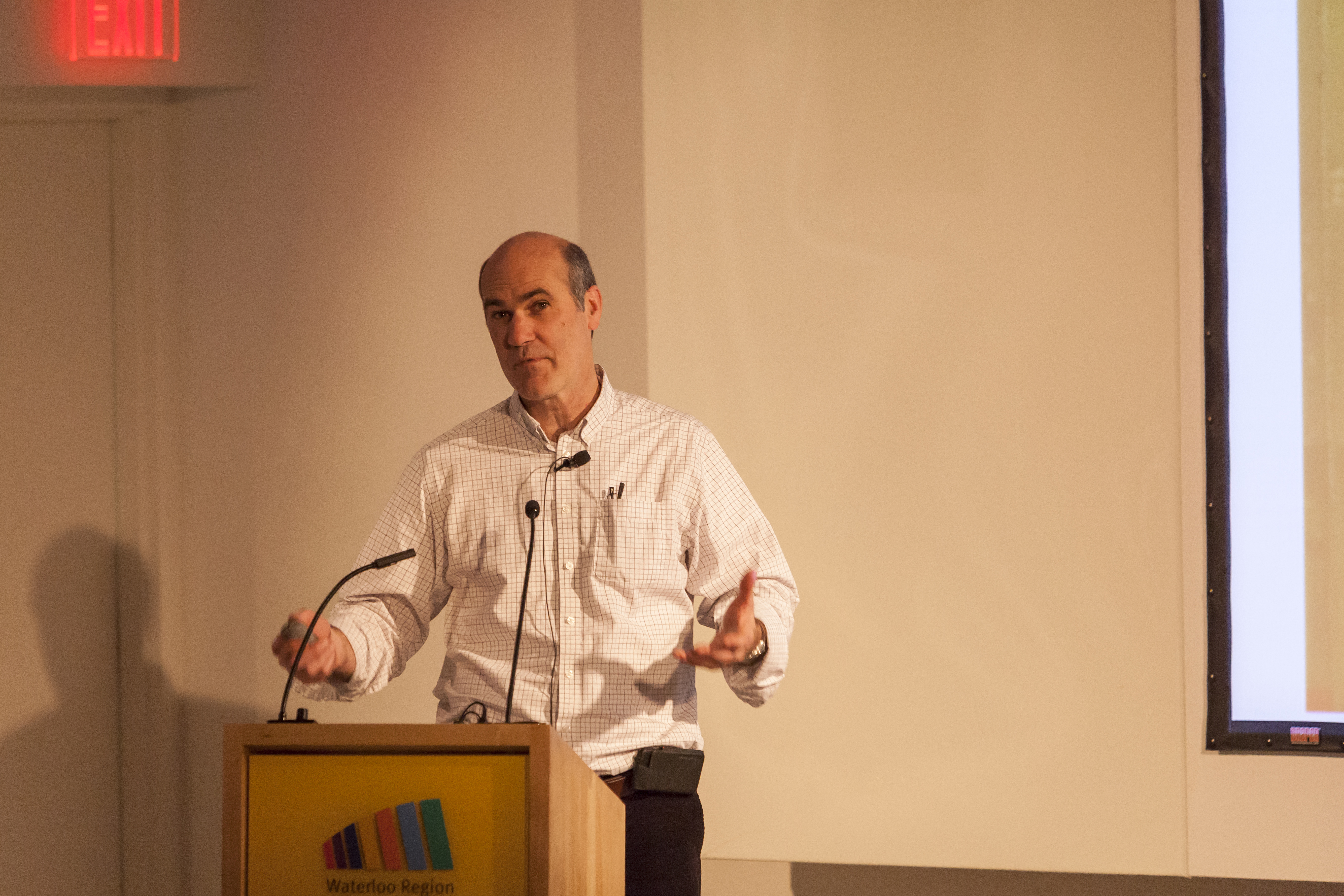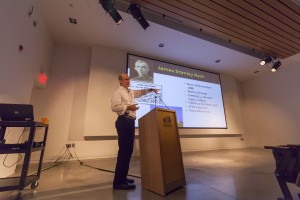A look at wartime Waterloo, 100 years later

On Monday, people were given the opportunity to see what life was like in Waterloo during the First World War.

On Monday, people were given the opportunity to see what life was like in Waterloo during the First World War.
Geoff Hayes, an associate professor of history at the University of Waterloo, gave a lecture at the Waterloo Region Museum called Waterloo County in 1914. The lecture, part of the Talks Speaker Series, related to this year’s 100th anniversary of the start of World War I and focused on what Waterloo was like before and during the war.
Hayes began the lecture by introducing the audience to a set of diary entries from Gordon Eby, a man who was in his early twenties when the war broke out. He presented a number of entries from the diary, which he kept before, during and after the war. The diary described a world much like ours.
“It’s a world of friends, it’s a world of social engagements,” said Hayes, who also mentioned how Waterloo in 1914 greatly differed. “This is also a period where a lot of people die in quite horrendous ways.”
Hayes also highlighted the stark difference in communication and global awareness in the past 100 years.
Although the people of the day had access to information on world events through newspapers, they knew very little about the pre-war crisis in Europe. Issues like Irish Home Rule and suffrage were much more popular than events in continental Europe. For instance, Eby even wrote an uneventful entry on Aug. 4, 1914 — the day Britain declared war on Germany.
“Gordon Eby’s entry on this day is ‘of course I was only an onlooker for I can’t dance,’ ” said Hayes, describing Eby’s focus on a dance event on the same day the war broke out.
The other oddity that Hayes highlighted in his lecture, which pertains specifically to Waterloo, was the issue of Mennonites going off to war. Mennonite culture is steeped in pacifism, yet many Mennonites from the area, including Eby, volunteered to fight.
The audience for Hayes’ lecture also reflected the culture and history of Waterloo. Many of the audience members, mostly senior community members, seemed to have ancestors involved in the war and were captivated by Hayes’ description of specific stores and establishments that existed in 1914 Waterloo.
The lecture ended with Hayes summing up the impact that the war had on the area and stressing the importance of continuing to remember and learn about the sacrifices that many of our ancestors have made.
“Many decided to embark on a war that would not bring them back to Waterloo county,” said Hayes. “So many of those kids died, and that is why Remembrance Day is so important for me.”

